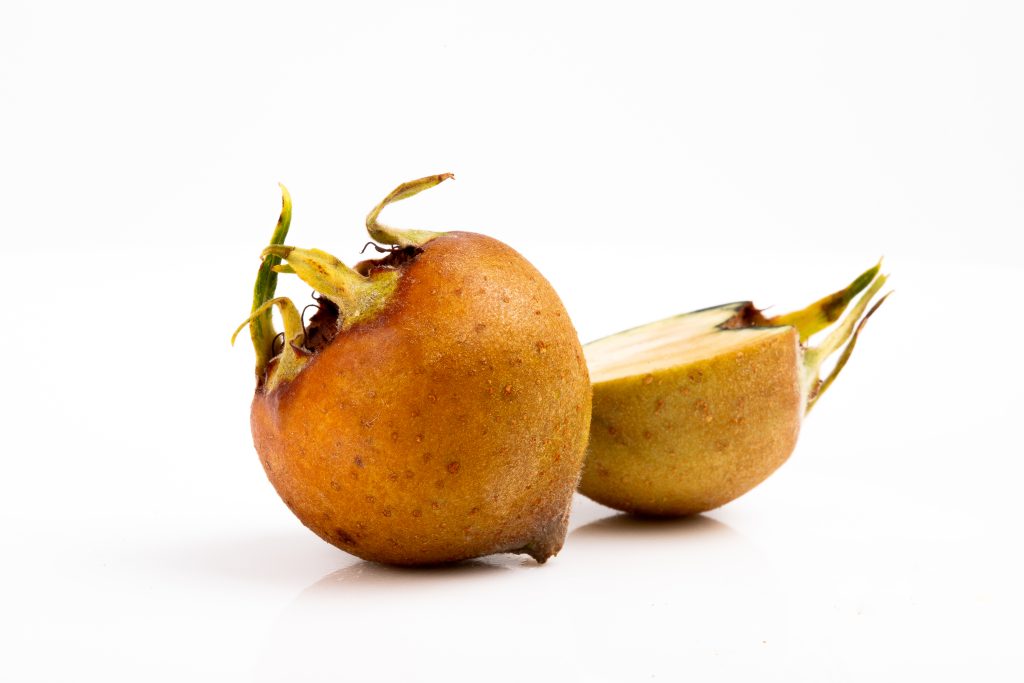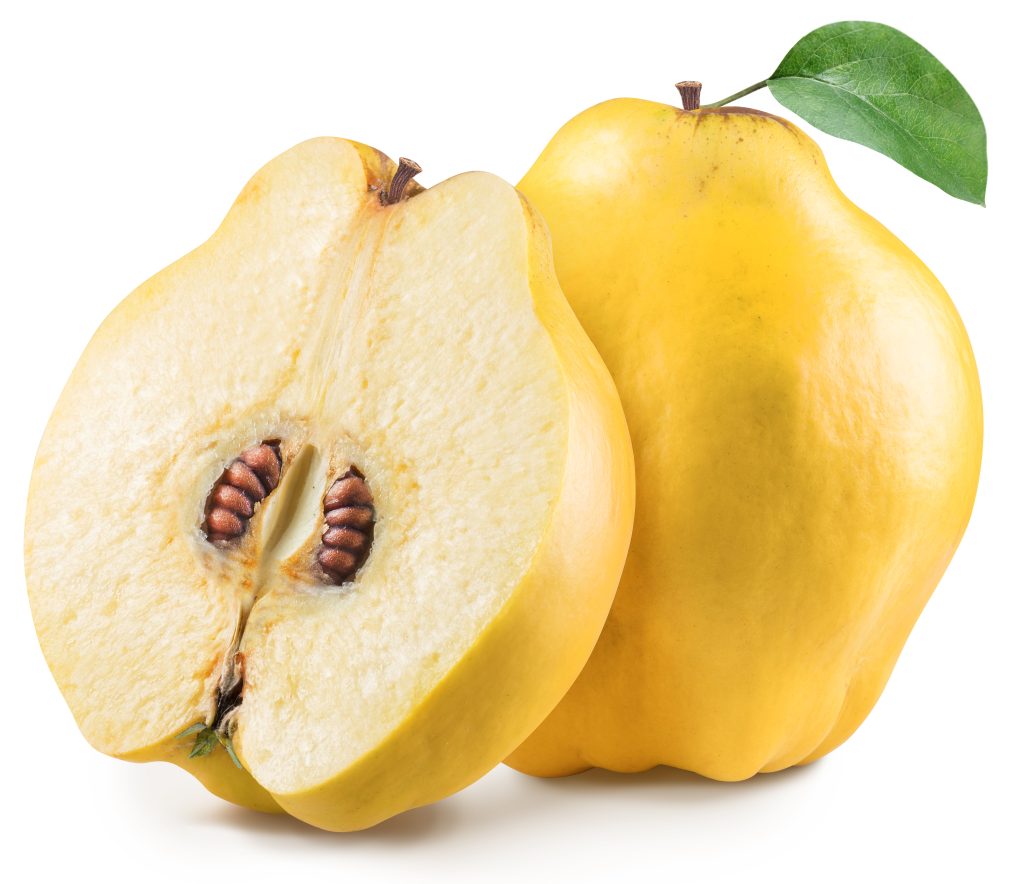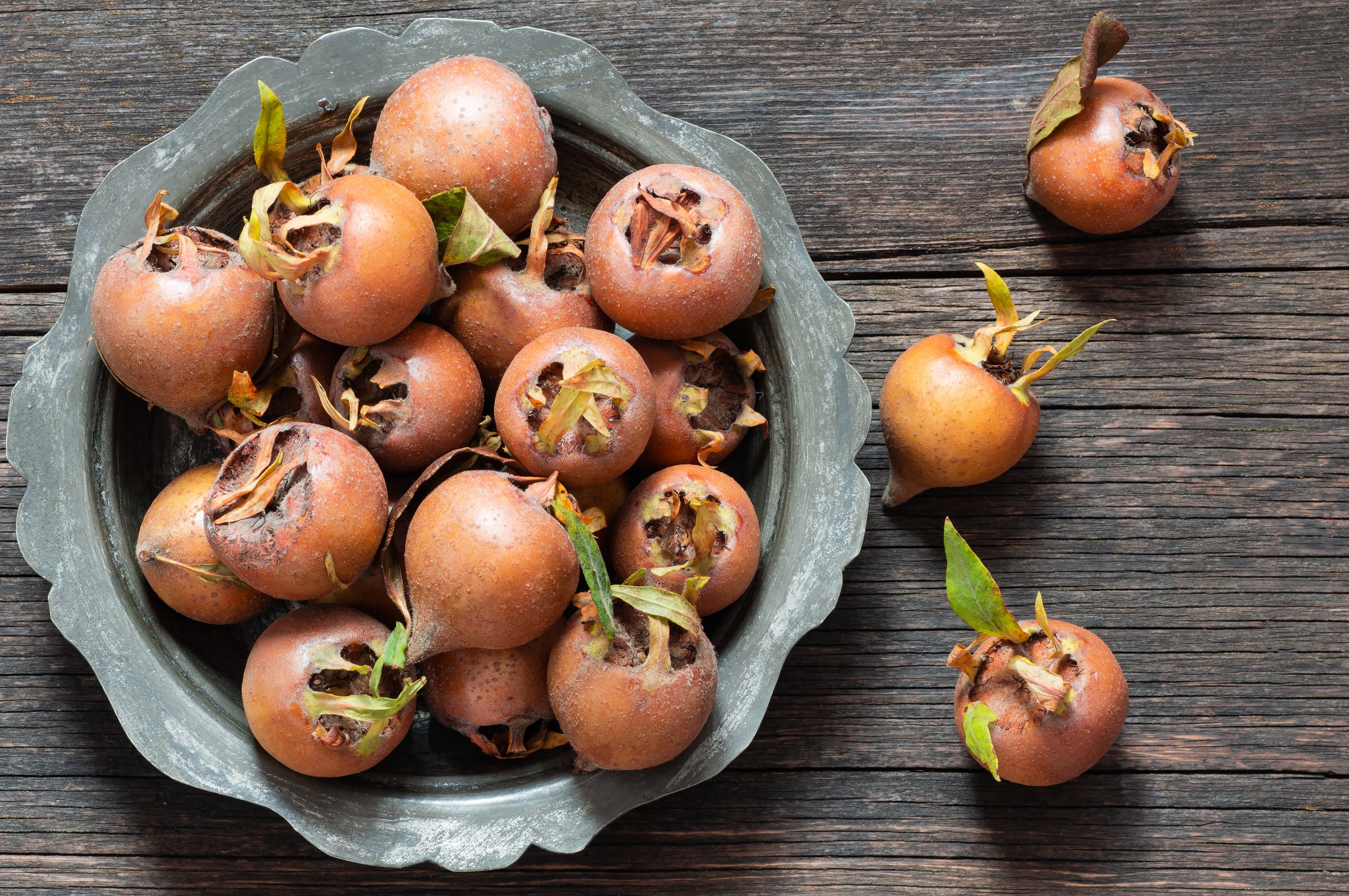Did you know that the medlar was referenced in Romeo and Juliet? The line, "the medlar, rotten with ripeness," references how the medlar fruit only gets better with time. As it develops, it becomes incredibly sweet, with hints of vanilla, apple, and pears.
Table of Contents
What is a Medlar?
The medlar fruit (Mespilus germanica) is a member of the Rosaceae family, along with strawberries and raspberries. It is a peculiar fruit many consider an acquired taste. And its unusual flavor and shape awarded it with vulgar nicknames like open-arse and monkey’s bottom.
It grows on a deciduous medlar tree that dates back to the Ancient Romans and was hailed for its naturally occurring dessert-like quality.
To enjoy the flavor of medlar, it first needs to be bletted. The bletting process lets the fruit ripen at room temperature over the winter until it becomes dark brown and wrinkly like a raisin. Unbletted medlars are sharp and astringent; they were even used as a mouthwash!
The History of Medlar
Medlar fruit trees have been depicted in ancient literature, such as Shakespeare’s Romeo and Juliet, since the age of the Romans in the Middle Ages. When tracing the origins of the medlar fruit tree through literature, historians discovered that it originated in Iran and Turkey and eventually made its way to Europe.
Before the 19th century, medlars were the go-to sweet treat. When cookies and sweet treats became easier to make at home, the love of medlars began to fade. Today, the hardy medlar tree is often used as nothing more than decoration in landscaping.

What Does a Medlar Taste Like?
Different varieties of medlars, like Nottingham, Royal, Dutch, Russian, and Hawthorn, all taste slightly different. However, most medlar fruits have something in common: they don’t taste great when fresh. Fresh medlars are bitter, sharp, and astringent. However, once bletted, the flavors are lovely.
Bletted medlars, or fruit on the brink of rotten, has a flavor many describe as tasting like apple butter or toffee apples. The flavors are surprisingly sweet and complex, with hints of vanilla. They’re also incredibly soft and squishy with a sweetness of a date.
How to Tell When Medlar is Ripe
Medlars ripen best right on the tree. And there are quick and easy ways to determine when it’s ready to eat.
Take everything you know about picking up perfectly ripe fruit, and throw it out the window!
| Color | When unripe, most types of medlars are green to bright yellow. Perfectly bletted medlars are brown and look rotten. If it’s brown and wrinkled, it’s ready to eat. |
| Firmness | Perfectly bletted medlars are wrinkled and squishy. If it bursts at the slightest touch, it’s ripe. |
| Smell | If the medlar has an aroma like cooked apples, it’s ripe. If you can’t smell anything, it still needs time to ripen on the tree. |
| Bruising | Unlike other fruit, bruising is perfectly normal and often a sign that it’s ready to enjoy. |
Medlars vs. Quince


Just like medlars, quince is another ancient fruit referenced by Shakespeare. While they’re both Medieval fruits, the flavors and textures are radically different.
Medlars are small, soft, and appear like a rosehip, while quince is pear-shaped and hard as a rock. You can eat medlars raw, but quince requires cooking to soften them. Medlars, when ripe, are incredibly sweet, like candy, while quince is very tart.
Can I Eat Raw Medlar?
The best way to enjoy medlar fruit is raw. They are so soft and tender inside that many dig right in with a spoon.
The flavors are delightful and toffee-like and make a fantastic dessert, like a naturally occurring applesauce. Eating them raw is the best way to enjoy this sweet treat, but you can also use it in recipes such as medlar cheese or medlar jelly.
Cooking with Medlar
Before you can cook with medlars, it’s essential to know how to prepare them for some wonderful recipes. Peeling the skin of medlars is time-consuming, and most cooks opt for this easy method to save time.
1. Place fully bletted medlars into a pot of cool water. Use a potato masher to smash them into a jelly, and let them simmer for at least 20 minutes.
2. Strain the skin and seeds. Place simmered medlar pulp into a colander, strain out the seeds, and peel. They are now ready to cook!
Here are a few excellent medlar recipes:
Medlar Cheese: Medlar cheese is a recipe that dates back to the Romans, and it’s a great way to really enjoy the sweetness of this unique fruit. It’s spiced with orange zest and vanilla and smells just like Christmas.
Medlar Fruit Butter: This medlar fruit butter (or medlar jam) tastes just like apple butter, only sweeter. The medlars deliver a wonderful sweetness enhanced by brown sugar. It’s excellent on toast, cereal, or a buttery biscuit.
Medlar Tart: Nothing says fall more than this aromatic medlar tart. The medlars deliver a wonderful sweetness, accented by hints of orange, honey, and almonds. It’s so soft and tender with a deliciously flakey crust.
How to Store Medlar
Unfortunately, bletted medlars have an abbreviated shelf life. Since it’s a fruit consumed at the brink of rotting, it will only last at room temperature for a few days.
If you want to extend its shelf life, store them in the fridge for a few extra days. The best way to keep bletted medlars is to place them in a freezer-safe bag, which will stay fresh for a few months.
Nutritional Benefits of Medlar
The common medlar has a host of fantastic health benefits. It’s rich in antioxidants, such as phenolic acids. They reduce inflammation throughout the body and help fight off free radicals.
They’re high in vitamins and nutrients such as iron, Calcium, magnesium, potassium, and Vitamin C, which boosts your immune system.
Higher potassium levels help lower blood pressure, maintain a healthy nervous system and stabilize blood sugar levels. One medar contains just shy of 50 calories, making it an excellent treat that’s great for your body.
Where to Purchase Medlar
Medlars are not a great candidate for shipping, so tracking them down at your local grocery stores is a dead end. Bletted medlars are incredibly delicate and fragile and don’t handle the shipping process well.
So, if you want to get some medlars, you have a few options. They often appear in specialty farmer’s markets at the peak of bletted ripeness, typically around late autumn. You can forage for them in places they grow wild in Europe, or you can purchase a medlar tree and grow one right in your backyard!

